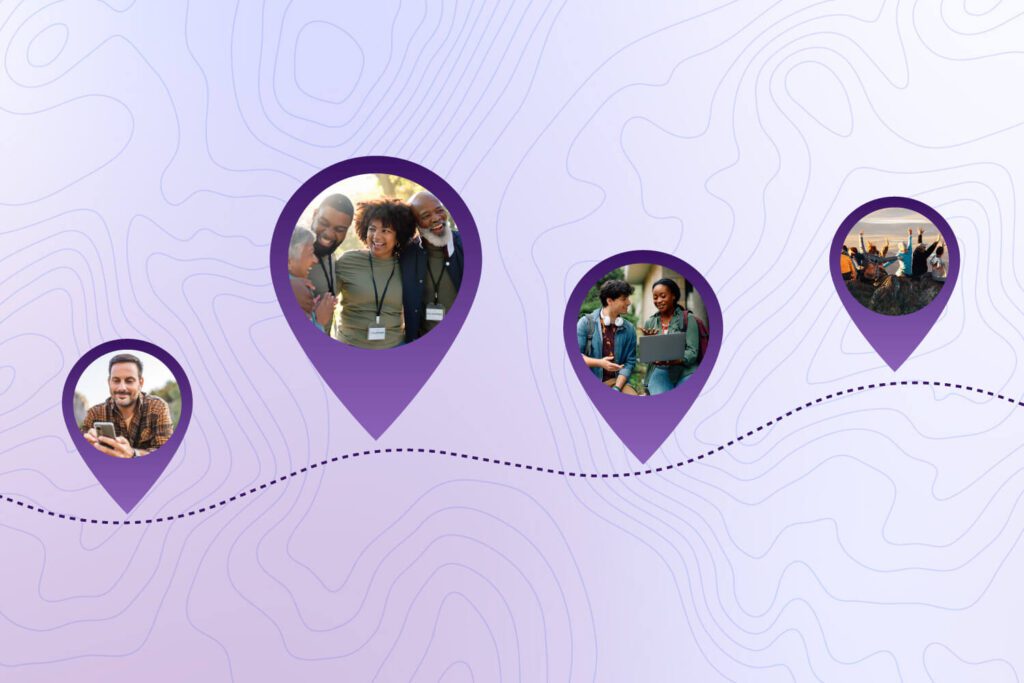Nonprofit organizations have incredible fundraising resources right in front of them: their board members, colleagues, and loyal volunteers. These people have the potential to be eager and effective fundraisers, they just need the right tools and support to succeed! This article will go over how to identify the best candidates for the job and three great tools for activating your supporters.
How to identify prospective fundraising messengers
While some nonprofits might have supporters lined up to volunteer their time as fundraisers, it might be more challenging for others to find great candidates—and that’s okay! You can use your donor management software to identify supporters and volunteers most likely to jump on board as fundraising messengers. Your best candidates will have the following traits:
- A long history of engagement with your nonprofit
- A leadership position, such as board member or ambassador president
- Vast personal and professional networks of potential donors
- Experience in strategic communications, stewardship, or sales
- Frequent availability for training and debriefing meetings with your team
Once you’ve narrowed down your prospects, it’s time to make your ask. Approach them with a personalized email, phone call, or in-person meeting to explain your volunteer fundraising program and why you need their help. Lay out details such as the required time commitment, tools your nonprofit is offering, and perks for joining the program. Most importantly, keep your communication channels open so that you can answer any questions and help them feel comfortable with the role.
3 tools to help your fundraising messengers succeed
These tools increase the odds that your prospects hear the kind of consistent and personal messages that spur engagement and giving.
1. Ready-to-use email signatures
This tool is both powerful and easy to implement. It adds a personal touch to your fundraising email that reminds the prospect that there’s a real human behind the correspondence.
Imagine the reach you’ll get if your messengers end their emails with something like this:

Ensure that each of your fundraising messengers has their own email sign-off, complete with their signature and a custom donation appeal with a link to your online donation page. That way, donors can appreciate the personal touch they’re receiving and conveniently make gifts by clicking the included donation page link.
2. Graphic design
Strategically designing graphics is a great way to build an emotional connection through images. After all, who can resist a face like this?

Graphics are easy for fundraising messengers to copy and paste into their emails, tweets, and Facebook posts to add some oomph to their appeal. Remember to brand the graphic badges to your organization, choose impactful and visually appealing images, and keep the text on them short and sweet so that the image is the main focus.
3. Email templates
Chances are, your fundraising messengers are new to making fundraising appeals. Take the guesswork out of crafting fundraising appeals by making email templates for them. Templates like this one make it easier for your messengers to reach out to more people in less time.

Hey [recipient’s name],
I hope you’ve been well since we last spoke! I’ve been busy working on a campaign to [goal or purpose of your fundraising campaign]. We’ve got a lot done, but there’s still work to do—can you help me out?
[Add a link to project]
We’re [$ amount] away from hitting my goal of [$ goal amount]. These funds will provide [tangible items or opportunities your funds will provide] for [your beneficiaries]. Plus, as an employee of [company recipient is employed at], you can get your gift matched by your employer at a [ratio, e.g. 1:1]ratio and boost your impact!
[Beneficiaries] depend on kind people like you to [how your nonprofit empowers your beneficiaries], and I would be very grateful if you could give or even just pass this message along to anyone who could help.
Thanks, [Your name]
[Your role]
[Your nonprofit’s name]
Even though this is a template that you will use for multiple donors, that doesn’t mean your appeal can’t be customized. Including the prospect’s name is a great start. Then, if you know their employer already, use a matching gift database to determine their employer’s matching gift ratio and include that in the email. This provides the prospect with personalized information and facilitates the giving process.
Another way to tailor your email outreach is to create several different templates at different formality levels. For instance, the above example was quite casual, but you can make a template with a more formal tone for larger asks or to use in a professional setting.
Preparing your new team
Your fundraising messengers have so much potential, so start training them as soon as possible for upcoming campaigns. Then, give them these three tools so they generate the greatest amount of support possible. As long as you provide them with the resources they need to succeed, your fundraising messengers can help you grow your supporter base for years to come.




